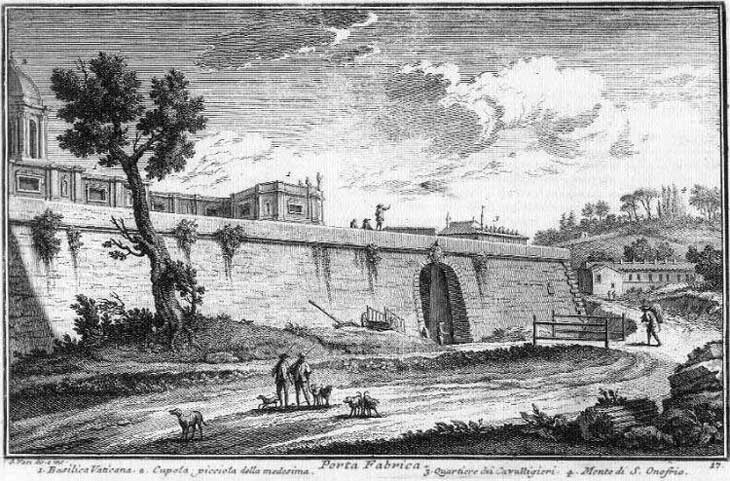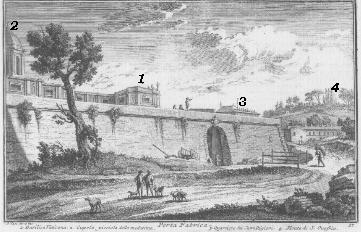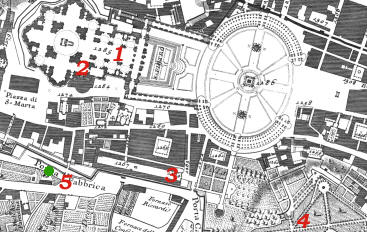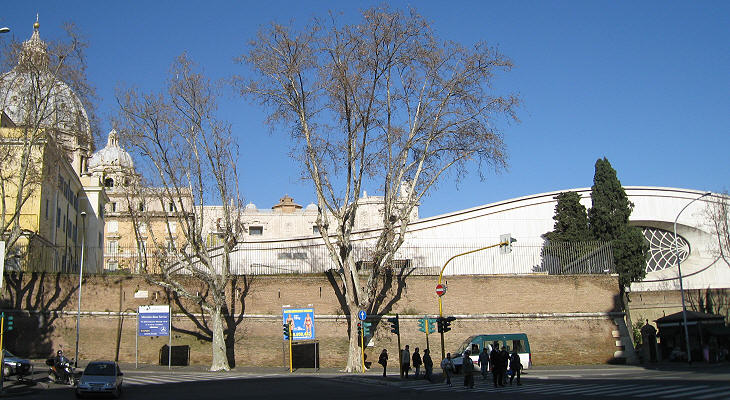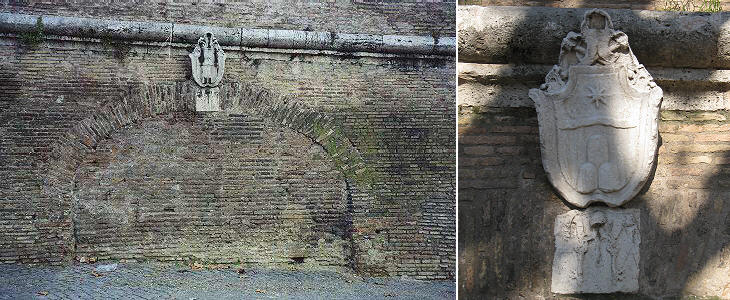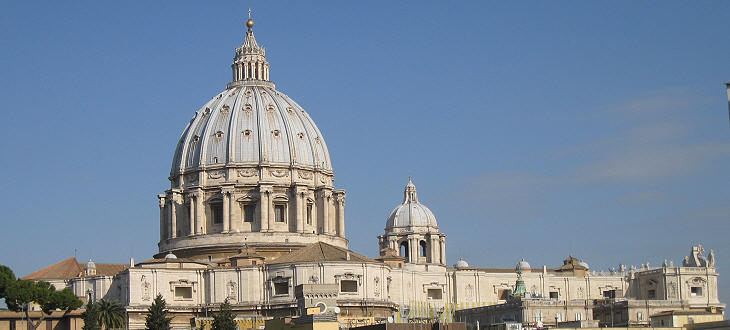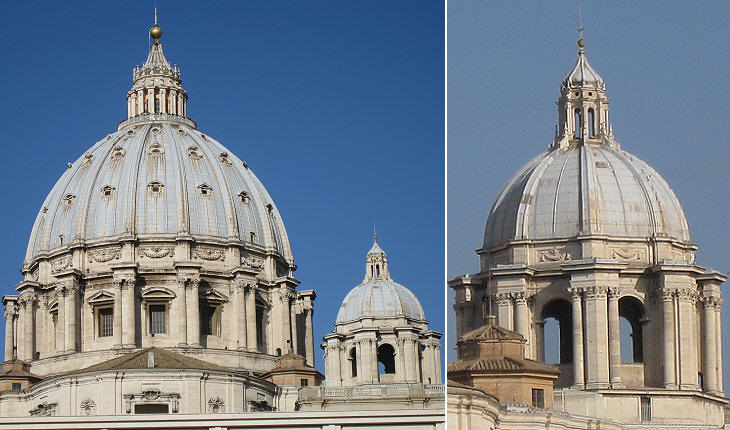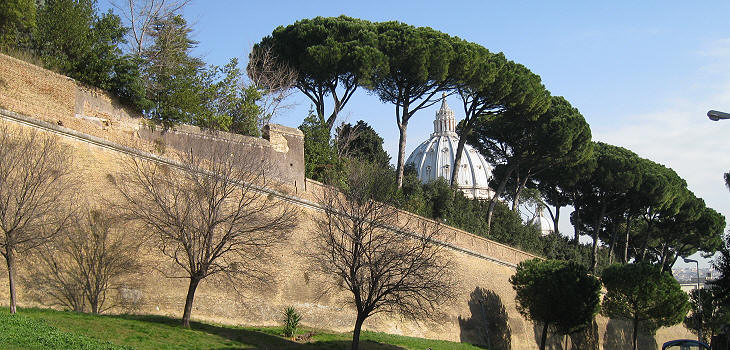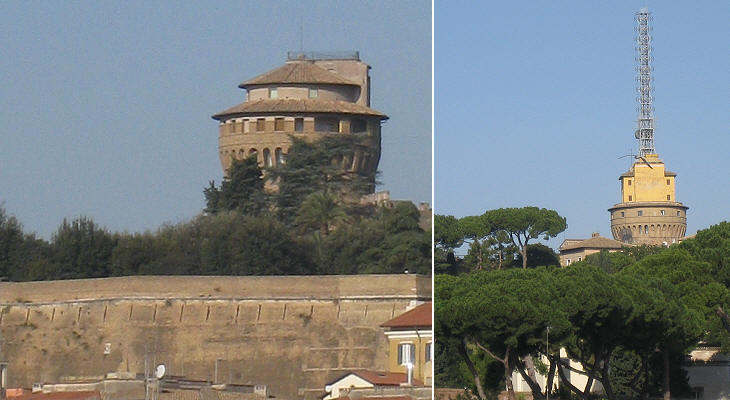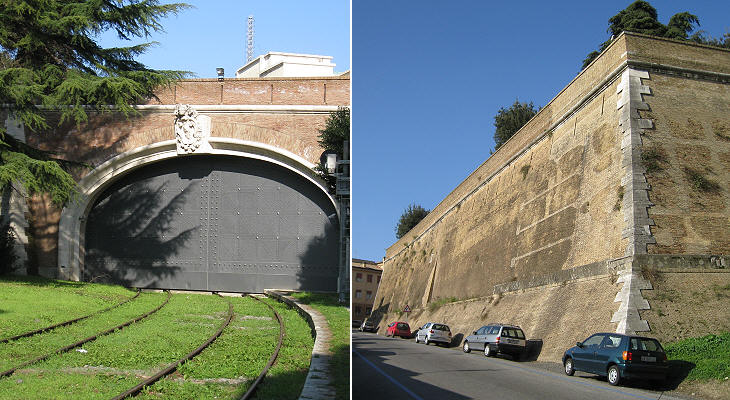  What's New! Detailed Sitemap All images © by Roberto Piperno, owner of the domain. Write to romapip@quipo.it. Text edited by Rosamie Moore. Page revised in February 2010. | Porta Fabrica (Book 1) (Map D2) (Day 8) (Rione Borgo)
In this page:
Today
Porta Fabrica was closed in 1870 when Pope Pius IX retired to the Vatican after the Italian troops had entered Rome. The gate was walled; because the ground was raised in order to build a modern road leading to new developments along Via Aurelia, today only its upper section is barely visible (at the far left side of the photo above). Porta Fabrica
Porta Fabrica was not protected by towers or bastions and only a damaged coat of arms indicates its location.
The plate shows one of the two small domes which were built before the completion of the main dome. The construction of the new basilica started in 1506; in 1564 when Michelangelo died the four gigantic pillars and the drum they supported were completed; Jacopo Barozzi, known as il Vignola replaced Michelangelo as Chief of Fabbrica di S. Pietro, but rather than working at the completion of the dome he preferred to concentrate on two small domes, as a sort of test for developing the appropriate construction technique for the main one.
Michelangelo had planned to use a round arch for the main dome and Vignola followed this approach in the design of the cupolini, whereas Giacomo Della Porta who in 1587-89 completed the main dome used a slightly pointed arch which enhances its vertical thrust. This is very evident when looking at the two domes in the same picture (more on the construction of S. Pietro).
The street along the walls is very steep and it offers nice views over the main dome of S. Pietro.
The XVIth century fortifications of the Vatican included two circular towers which can be seen behind this section of the walls; one of the towers was used in the early XXth century for radio broadcasting. Today Radio Vaticana is broadcasted from S. Maria di Galeria.
In 1929 an overall agreement (Patti Lateranensi) was reached between the Holy See and the Kingdom of Italy in order to settle the issues arising from the 1870 events; one of the provisions of the agreement established the construction of a short railway to link Vatican City to the Italian net; inside the Vatican a small railway station was built and the walls were opened at this location to allow the track to reach it. This line is very rarely used; on October 4, 1962 Pope John XXIII started from this station the first railway journey of a pope since 1857; he visited Loreto and Assisi.
Next plate in Book 1: Porta Pertusa Next step in Day 8 itinerary: Seminario di S. Pietro in Vaticano |
